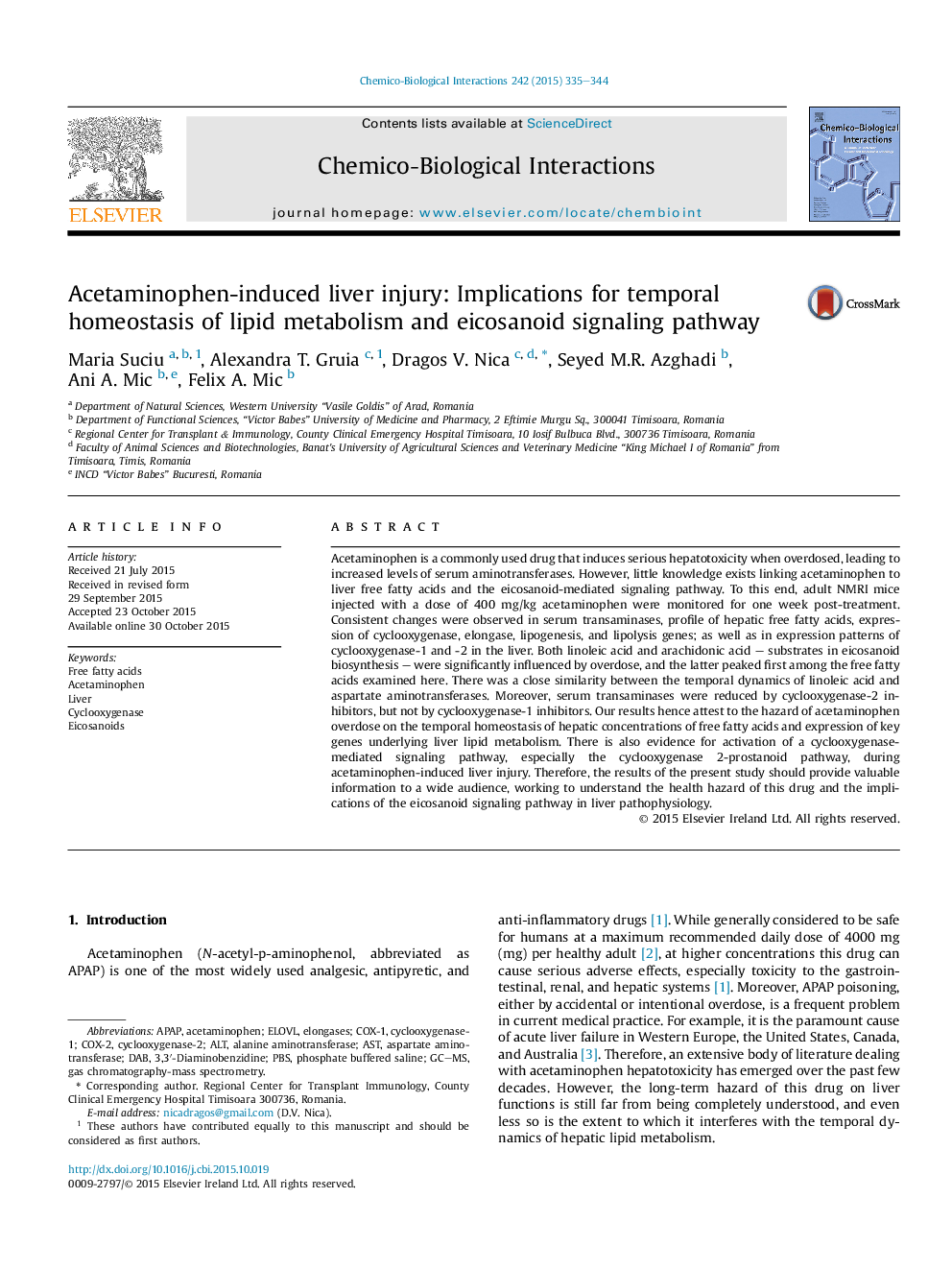| کد مقاله | کد نشریه | سال انتشار | مقاله انگلیسی | نسخه تمام متن |
|---|---|---|---|---|
| 2579986 | 1561599 | 2015 | 10 صفحه PDF | دانلود رایگان |
• Acetaminophen effect on temporal dynamics of liver lipid catabolism was determined.
• The role of eicosanoid-mediated signaling pathway during this time was also assessed.
• Overdose altered liver free fatty acid content and expression of key hepatic genes.
• Arachidonic acid was the most quickly and significantly responsive to overdose.
• A cyclooxygenase-2-mediated signaling pathway was activated during this toxic event.
Acetaminophen is a commonly used drug that induces serious hepatotoxicity when overdosed, leading to increased levels of serum aminotransferases. However, little knowledge exists linking acetaminophen to liver free fatty acids and the eicosanoid-mediated signaling pathway. To this end, adult NMRI mice injected with a dose of 400 mg/kg acetaminophen were monitored for one week post-treatment. Consistent changes were observed in serum transaminases, profile of hepatic free fatty acids, expression of cyclooxygenase, elongase, lipogenesis, and lipolysis genes; as well as in expression patterns of cyclooxygenase-1 and -2 in the liver. Both linoleic acid and arachidonic acid – substrates in eicosanoid biosynthesis – were significantly influenced by overdose, and the latter peaked first among the free fatty acids examined here. There was a close similarity between the temporal dynamics of linoleic acid and aspartate aminotransferases. Moreover, serum transaminases were reduced by cyclooxygenase-2 inhibitors, but not by cyclooxygenase-1 inhibitors. Our results hence attest to the hazard of acetaminophen overdose on the temporal homeostasis of hepatic concentrations of free fatty acids and expression of key genes underlying liver lipid metabolism. There is also evidence for activation of a cyclooxygenase-mediated signaling pathway, especially the cyclooxygenase 2-prostanoid pathway, during acetaminophen-induced liver injury. Therefore, the results of the present study should provide valuable information to a wide audience, working to understand the health hazard of this drug and the implications of the eicosanoid signaling pathway in liver pathophysiology.
Figure optionsDownload as PowerPoint slide
Journal: Chemico-Biological Interactions - Volume 242, 5 December 2015, Pages 335–344
